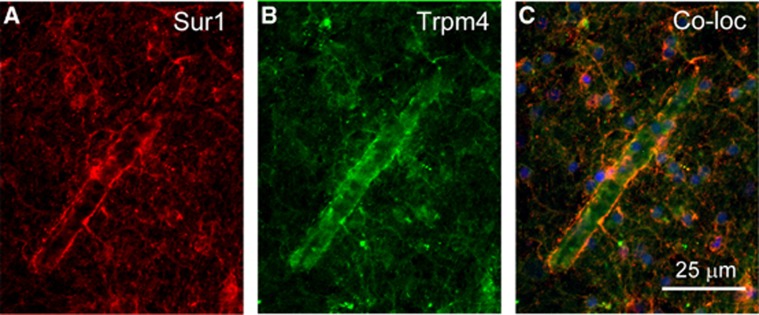Figure 3.
Sulfonylurea receptor 1 (Sur1) and transient receptor potential melastatin (Trpm4) colocalize after central nervous system (CNS) injury in the human. (A to C) Human brain tissue freshly obtained during surgery to remove a blood clot due to rupture of an arteriovenous malformation shows prominent expression of Sur1 (red) and of Trpm4 (green) in a microvessel and in astroglial processes on the microvessel; the merged images also are shown (C); nuclei are labeled with 4′,6-diamidino-2-phenylindole dihydrochloride (blue). Same case as previously shown in Figure 2 of Simard et al (2008a).

